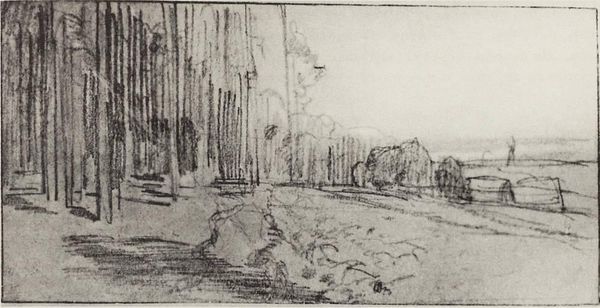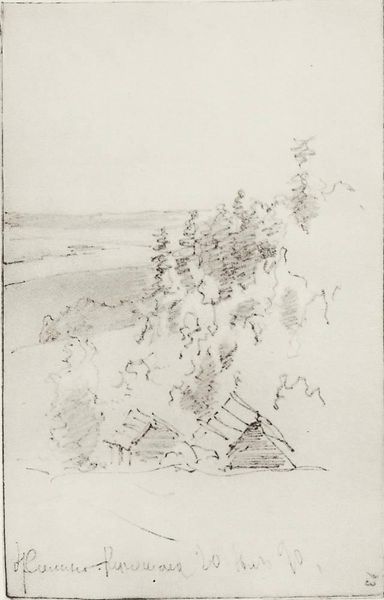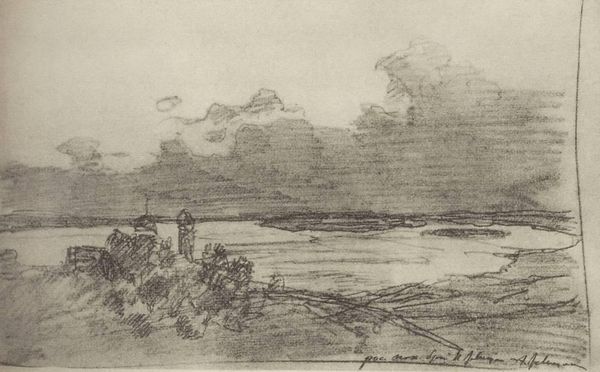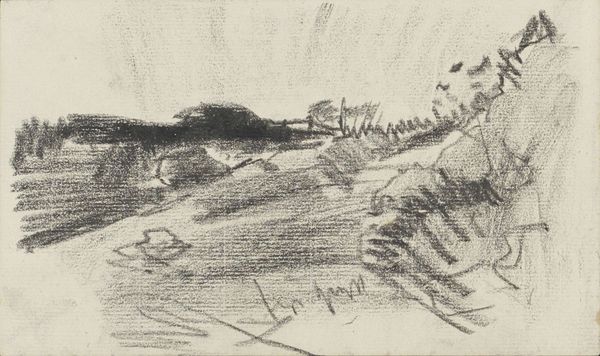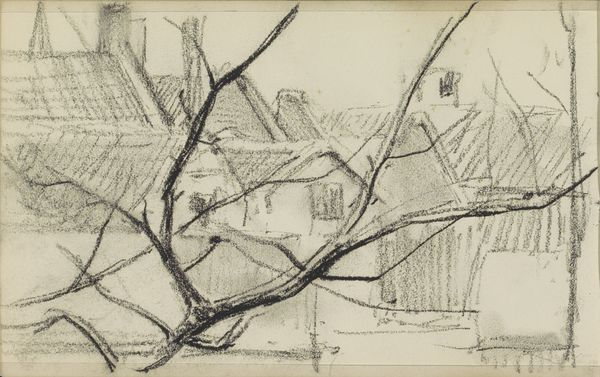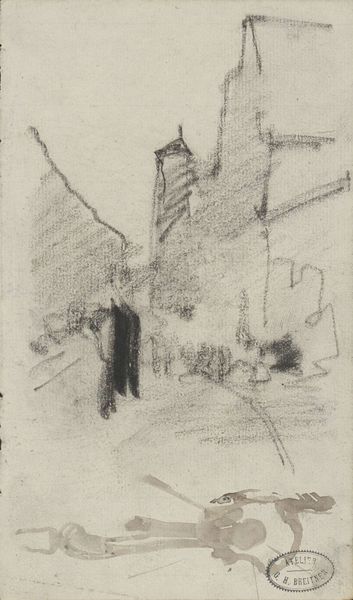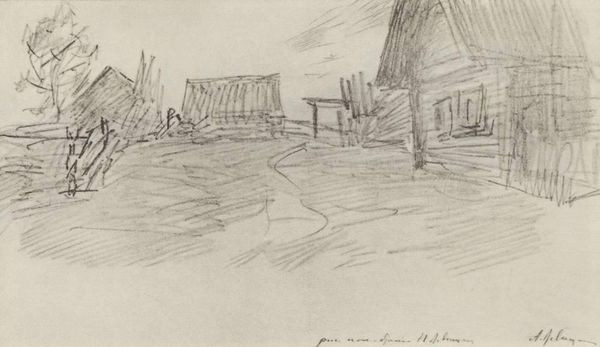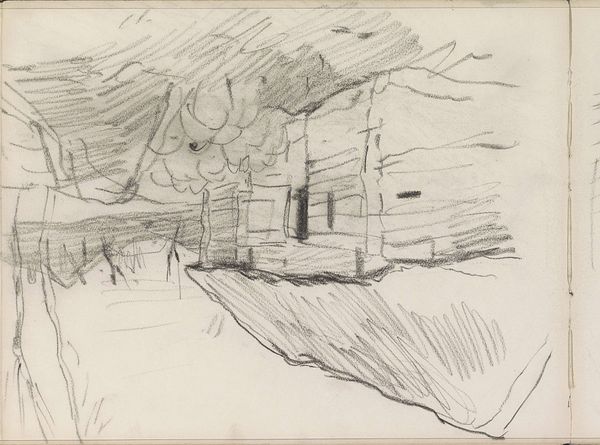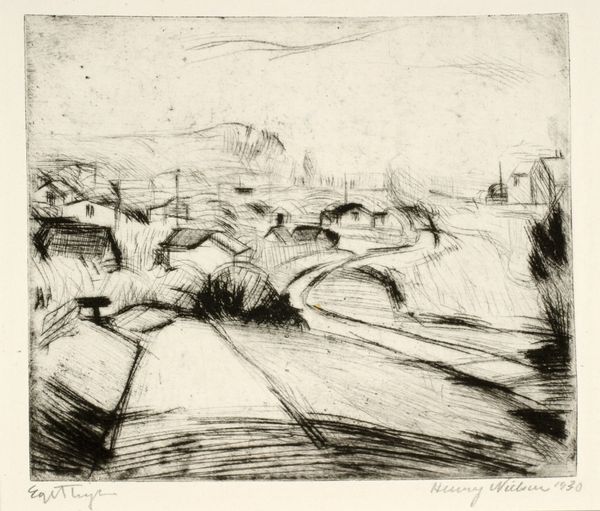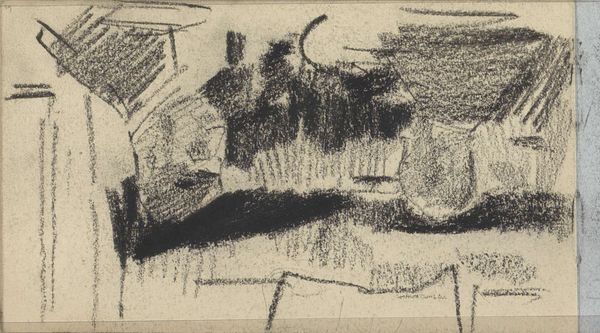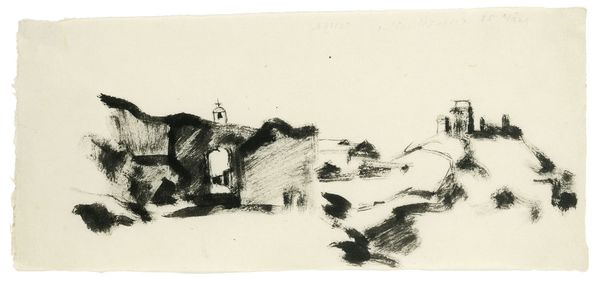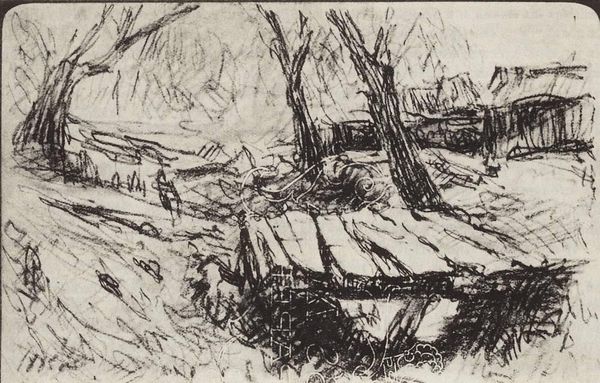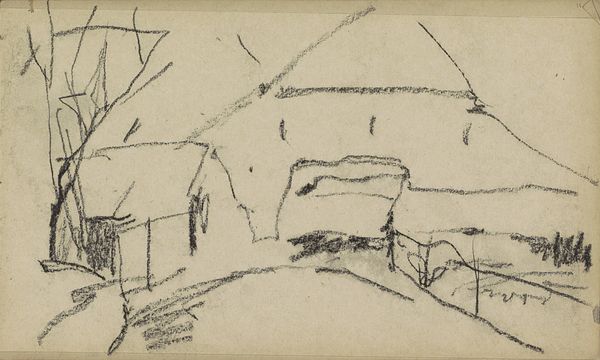
#
architectural sketch
#
amateur sketch
#
pencil sketch
#
sketched
#
incomplete sketchy
#
idea generation sketch
#
sketchwork
#
detailed observational sketch
#
sketch
#
pen-ink sketch
#
initial sketch
Copyright: Public domain
Editor: Here we have Isaac Levitan's "Village Savvinskaya near Zvenigorod," a pencil sketch from 1884. The rapid lines give it a sense of immediacy, like a fleeting impression. What strikes you about this piece? Curator: That 'fleeting impression' speaks volumes. Levitan wasn't just capturing a landscape; he was engaging with the historical and social reality of the Russian village in the late 19th century. What do you see in terms of power dynamics in the sketch itself? Is anything emphasized or erased? Editor: I see… mostly just the structures, the houses, maybe a suggestion of the landscape around it? It feels very bare-bones, not romanticized. Curator: Exactly. Consider the social and political climate. This was a time of immense social upheaval in Russia, with peasants often living in poverty while landowners held significant power. Levitan, as a Jewish artist navigating antisemitism, likely had a unique understanding of marginalization. Do you think that perspective informs the seemingly simple depiction? Editor: That's interesting. Perhaps the lack of embellishment is a commentary in itself, avoiding idealization of a life that was, for many, incredibly difficult? Almost like a form of early social realism. Curator: Precisely! He's stripping away romantic notions, presenting a stark view of rural life, perhaps implicitly critiquing the social disparities of the time. What does this make you think about art's role in social discourse? Editor: I see what you mean. It highlights that even a sketch, seemingly simple, can participate in a broader dialogue about identity, power, and representation. I'll never look at a landscape the same way. Curator: And that, I think, is the power of art history.
Comments
No comments
Be the first to comment and join the conversation on the ultimate creative platform.
